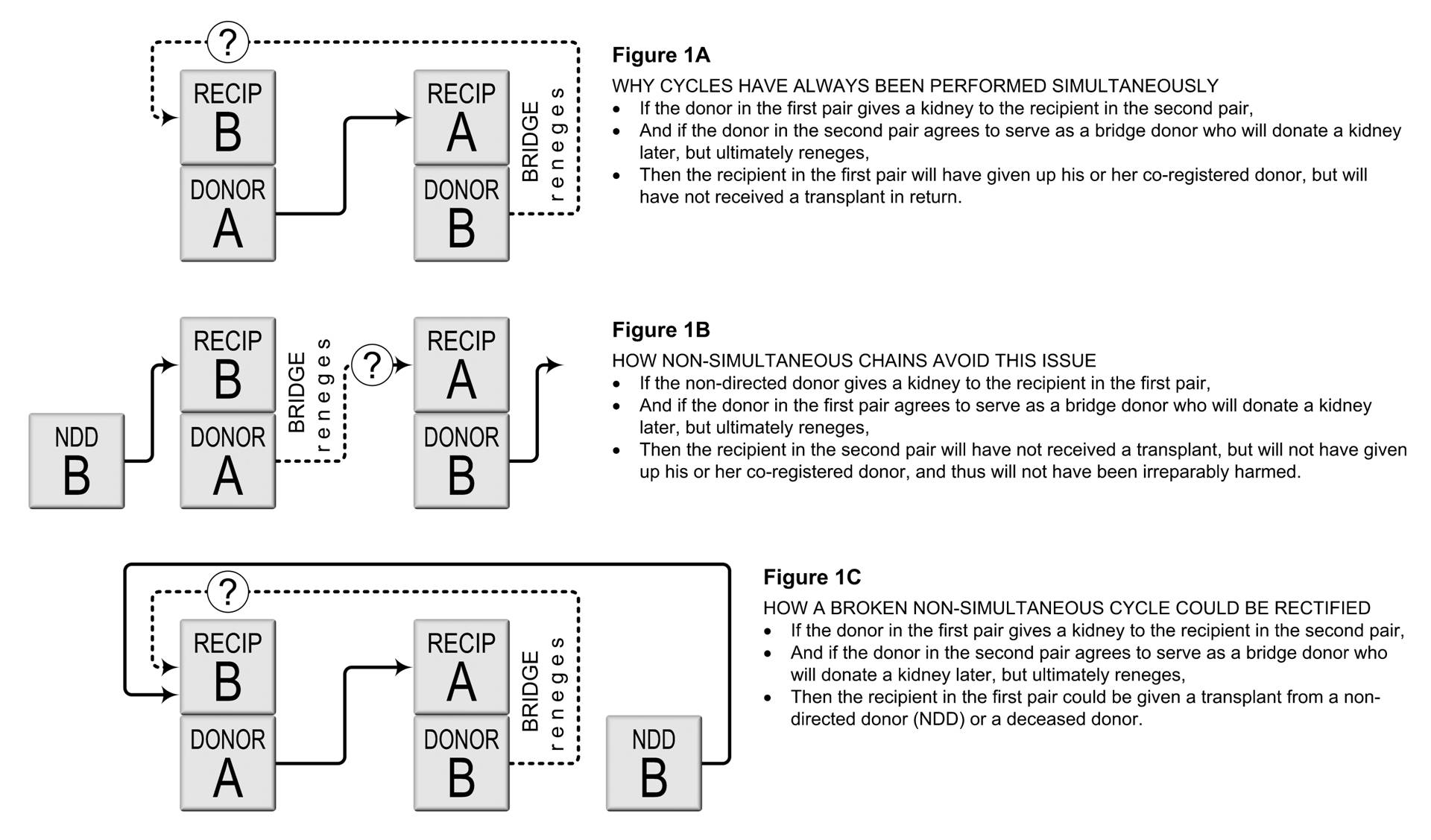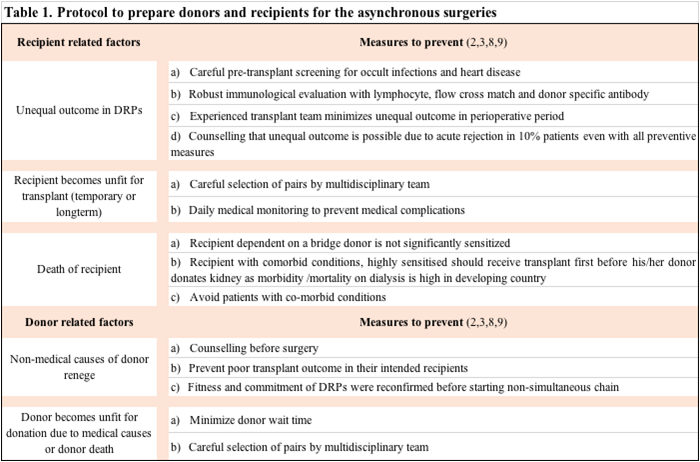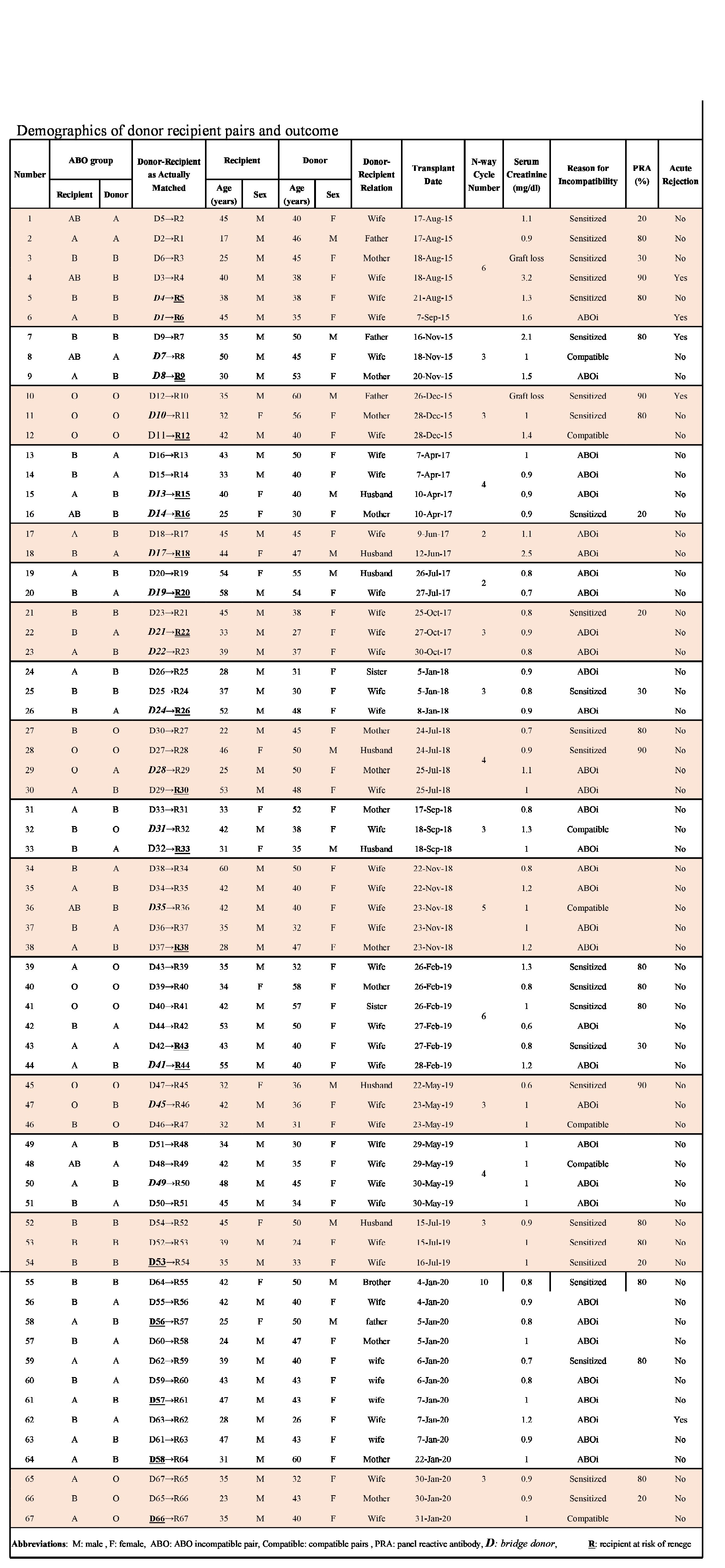Non-simultaneous kidney exchange cycles in resource restricted countries without non-directed donation
Hari Shankar Meshram1, Vivek Kute1, Himanshu Patel1, Pankaj Shah1, Divyesh Engineer1, Subho Banerjee1, Sudeep Desai1, Sanshriti Chauhan1, Pranjal Modi1, Sayyad Rizvi1, Ansy Patel1, Michael A. Rees2, Vineet V. Mishra1, Bina P. Butala1.
1Nephrology and Transplantation , IKDRC-ITS, Ahmedabad, India; 2Alliance for Paired Donation, APD, Perrysburg, TX, United States
Introduction: Recent reports suggest that bridge donor reneging is rare (1.5%) in non-simultaneous kidney exchange chains. However, in developing countries, the non-directed donors who would be needed to initiate chains are unavailable, and furthermore, limited surgical space and resources restrain the feasibility of simultaneous kidney exchange cycles. Therefore, the aim of this study was to evaluate the bridge donor reneging rate during non-simultaneous kidney exchange cycles in a prospective single-center cohort study (n=67).

Methodology: We describe the protocol used to prepare co-registered donor-recipient pairs for non-simultaneous surgeries, in an effort to minimize the reneging rate. In addition, in order to protect any recipients who might be left vulnerable by this arrangement, we proposed the use of deceased-donor kidneys to rectify the injustice in the event of any bridge donor reneging.

Results: We report 17 successful non-simultaneous kidney exchange cycles resulting in 67 living- donor kidney transplants. These cycles involved 23 bridge donors who were trusted to donate after their co-registered recipients were transplanted, placing 17 recipients at risk (two of whom were at risk from two bridge donors). In all of these non-simultaneous cycles, no donor ever reneged. We propose that non-simultaneous kidney exchange cycles could increase living-donor kidney transplantation, especially for difficult-to-match sensitized pairs (25 of our 67 pairs) in countries with limited transplantation resources. 
Conclusion: Our study confirms that non-simultaneous kidney exchange cycles can be safely performed with careful patient-donor selection and non-anonymous kidney exchanges.
[1] Kute VB, Shah PS, Vanikar AV, et al. Increasing access to renal transplantation in India through our single-center kidney paired donation program: A model for the developing world to prevent commercial transplantation. Transpl Int 2014; 27:1015- 21.
[2] Kute VB, Agarwal SK, Sahay M, et al. Kidney-paired donation to increase living donor kidney transplantation in India: Guidelines of Indian Society of Organ Transplantation – 2017. Indian J Nephrol 2018; 28:1-9.
[3] Rees MA, Kopke JE, Pelletier RP, et al. A nonsimultaneous, extended, altruistic-donor chain. N Engl J Med. 2009; 360:1096-101.
There are no comments yet...